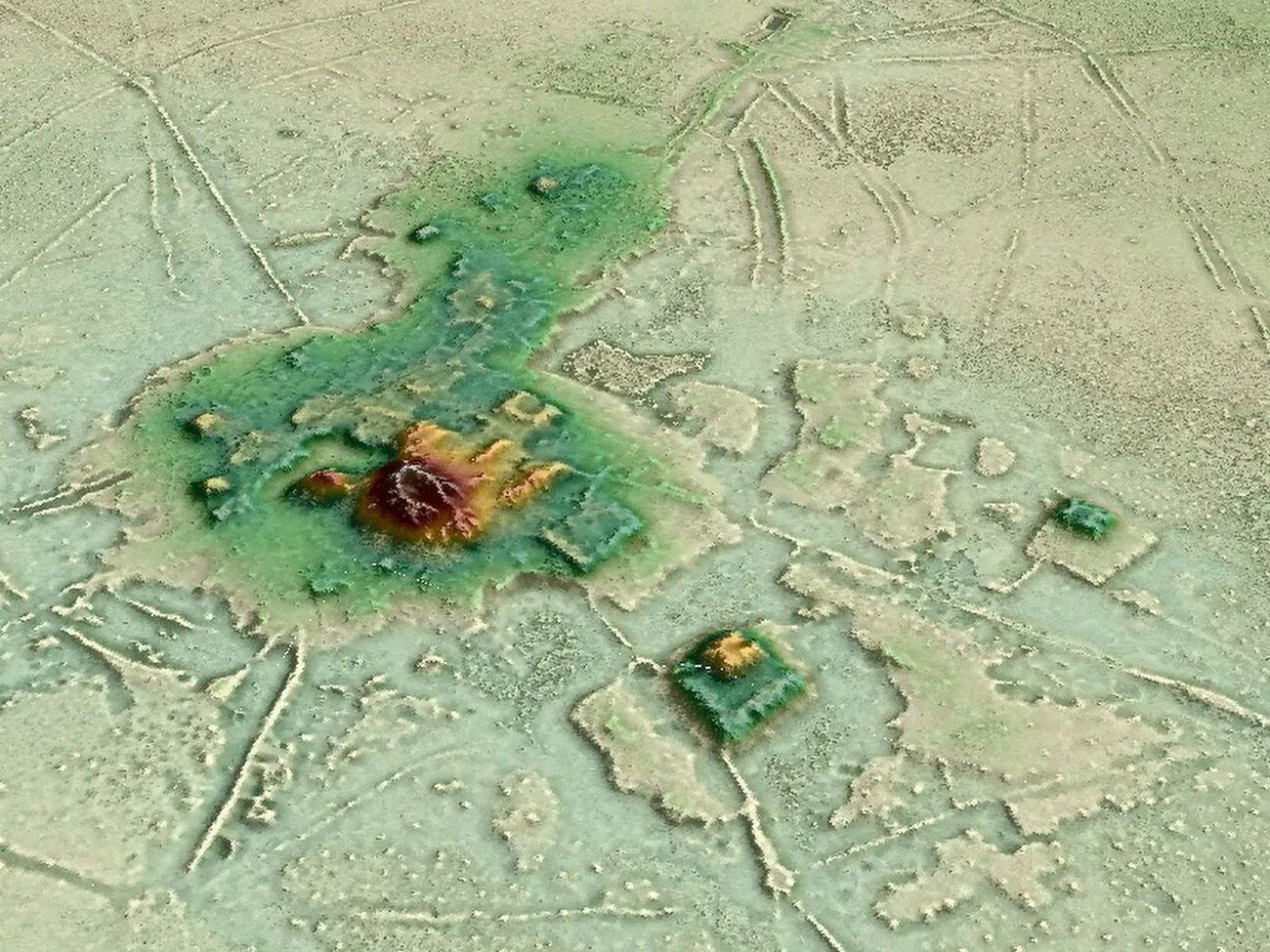
Did you know that the Amazon rainforest hides ancient cities beneath its dense canopy? For centuries, explorers and scientists have been fascinated by the lost cities of the Amazon, often referred to as the "El Dorado" of the jungle. These cities, once bustling with life, are now shrouded in mystery and overgrown by nature. Archaeologists have uncovered evidence of complex societies with advanced agricultural systems, intricate road networks, and impressive architectural structures. Satellite technology has recently revealed even more about these hidden civilizations, showing that the Amazon was home to millions of people before European contact. Join us as we delve into 30 intriguing facts about these enigmatic lost cities, shedding light on their history, culture, and the ongoing efforts to uncover their secrets.
Key Takeaways:
- The Amazon Rainforest holds the secrets of ancient civilizations, with advanced societies and lost cities waiting to be uncovered. Modern technology and indigenous knowledge are shedding light on this mysterious history.
- European contact and colonial exploitation dramatically impacted the Amazon's ancient civilizations, leading to population declines and the abandonment of many settlements. Today, efforts to rediscover and preserve these lost cities are ongoing, offering a glimpse into the region's rich history.
The Mystery of Lost Cities in the Amazon
The Amazon Rainforest, often called the "lungs of the Earth," hides many secrets beneath its dense canopy. Among these secrets are the lost cities that once thrived in this vast jungle. Let's dive into some fascinating facts about these ancient civilizations.
-
The Amazon was once home to millions of people. Archaeologists estimate that up to 10 million people lived in the Amazon before European contact.
-
These civilizations built complex societies. Evidence shows they had advanced agricultural systems, road networks, and even cities.
-
The Amazon's soil was engineered. Known as "terra preta" or black earth, this fertile soil was created by ancient Amazonians to support agriculture.
-
Satellite technology helps uncover lost cities. Modern technology like LiDAR (Light Detection and Ranging) has revealed hidden structures beneath the forest canopy.
-
The Amazon is not just a natural forest. Much of it is a "cultural parkland" shaped by human activity over thousands of years.
The Enigmatic City of Z
The legend of the City of Z has intrigued explorers for centuries. This mythical city was said to be a grand civilization hidden deep within the Amazon.
-
Percy Fawcett's quest for Z. British explorer Percy Fawcett disappeared in 1925 while searching for this lost city.
-
The City of Z might be real. Recent discoveries suggest that large, complex societies did exist in the Amazon, possibly inspiring the legend of Z.
-
Fawcett's disappearance remains a mystery. Despite numerous expeditions, no trace of Fawcett or his party has ever been found.
-
The City of Z was believed to be rich in gold. Legends spoke of immense wealth, fueling many expeditions.
-
Modern explorers continue the search. Despite the dangers, the allure of finding the City of Z still draws adventurers to the Amazon.
The Kuhikugu Complex
Kuhikugu is one of the most significant archaeological discoveries in the Amazon, revealing a network of ancient settlements.
-
Kuhikugu was discovered in the early 2000s. Archaeologist Michael Heckenberger and his team uncovered this complex near the Xingu River.
-
It consists of over 20 settlements. These interconnected villages covered an area of about 7,700 square miles.
-
Kuhikugu had advanced infrastructure. The settlements featured roads, bridges, and defensive structures.
-
The inhabitants practiced sustainable agriculture. They cultivated crops like manioc and corn, using techniques that preserved the soil.
-
Kuhikugu thrived for centuries. This civilization existed from around 1250 to 1650 AD before being abandoned.
The Role of Indigenous Knowledge
Indigenous peoples of the Amazon have preserved knowledge about these ancient civilizations through oral traditions and practices.
-
Indigenous tribes have deep historical knowledge. Their stories and practices offer insights into the lives of ancient Amazonians.
-
Traditional ecological knowledge is invaluable. Indigenous methods of land management and agriculture are being studied for sustainable practices.
-
Collaboration with indigenous communities is crucial. Archaeologists work with local tribes to uncover and protect these ancient sites.
-
Indigenous art reflects ancient cultures. Pottery, carvings, and other artifacts provide clues about the daily lives and beliefs of these civilizations.
-
Oral histories preserve ancient legends. Stories passed down through generations keep the memory of lost cities alive.
The Impact of European Contact
The arrival of Europeans had a profound impact on the civilizations of the Amazon, leading to dramatic changes.
-
Diseases decimated populations. Smallpox, measles, and other diseases brought by Europeans caused massive population declines.
-
Many cities were abandoned. The loss of life and disruption of societies led to the abandonment of many settlements.
-
European explorers documented their findings. Early explorers like Francisco de Orellana reported seeing large cities and advanced societies.
-
The search for El Dorado. The legend of a city of gold, El Dorado, led many Europeans into the Amazon, often with disastrous results.
-
Colonial exploitation. The Amazon's resources were heavily exploited, further impacting indigenous populations and their way of life.
Rediscovering the Past
Modern archaeology and technology are helping to uncover the secrets of these lost cities, providing a clearer picture of their history.
-
LiDAR technology is a game-changer. This technology allows researchers to see through the dense forest canopy, revealing hidden structures.
-
Excavations are ongoing. Archaeologists continue to dig and study sites across the Amazon, uncovering new information.
-
Preservation efforts are crucial. Protecting these sites from looting and destruction is a priority for researchers and local communities.
-
Public interest is growing. Documentaries, books, and articles are bringing attention to the rich history of the Amazon.
-
The Amazon still holds many secrets. Despite recent discoveries, much of the Amazon's history remains a mystery, waiting to be uncovered.
The Mysteries of the Amazon Continue
Lost cities of the Amazon still captivate our imagination. From El Dorado to Z, these tales blend history, myth, and adventure. Archaeologists keep uncovering new evidence, showing us that ancient civilizations thrived in this dense jungle. Advanced technologies like LiDAR reveal hidden structures, changing our understanding of these lost worlds.
These discoveries remind us how much remains unknown about our planet's past. They also highlight the resilience and ingenuity of ancient peoples who adapted to challenging environments. As research continues, who knows what other secrets the Amazon might reveal?
Stay curious, and keep exploring the wonders of our world. The Amazon's lost cities are just one piece of a vast puzzle waiting to be solved.
Frequently Asked Questions
Was this page helpful?
Our commitment to delivering trustworthy and engaging content is at the heart of what we do. Each fact on our site is contributed by real users like you, bringing a wealth of diverse insights and information. To ensure the highest standards of accuracy and reliability, our dedicated editors meticulously review each submission. This process guarantees that the facts we share are not only fascinating but also credible. Trust in our commitment to quality and authenticity as you explore and learn with us.


